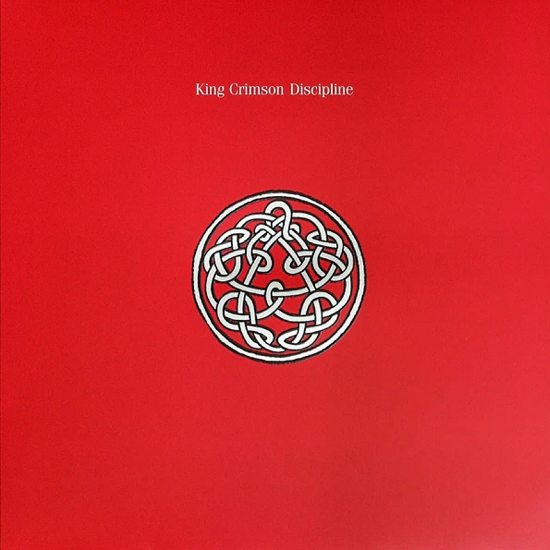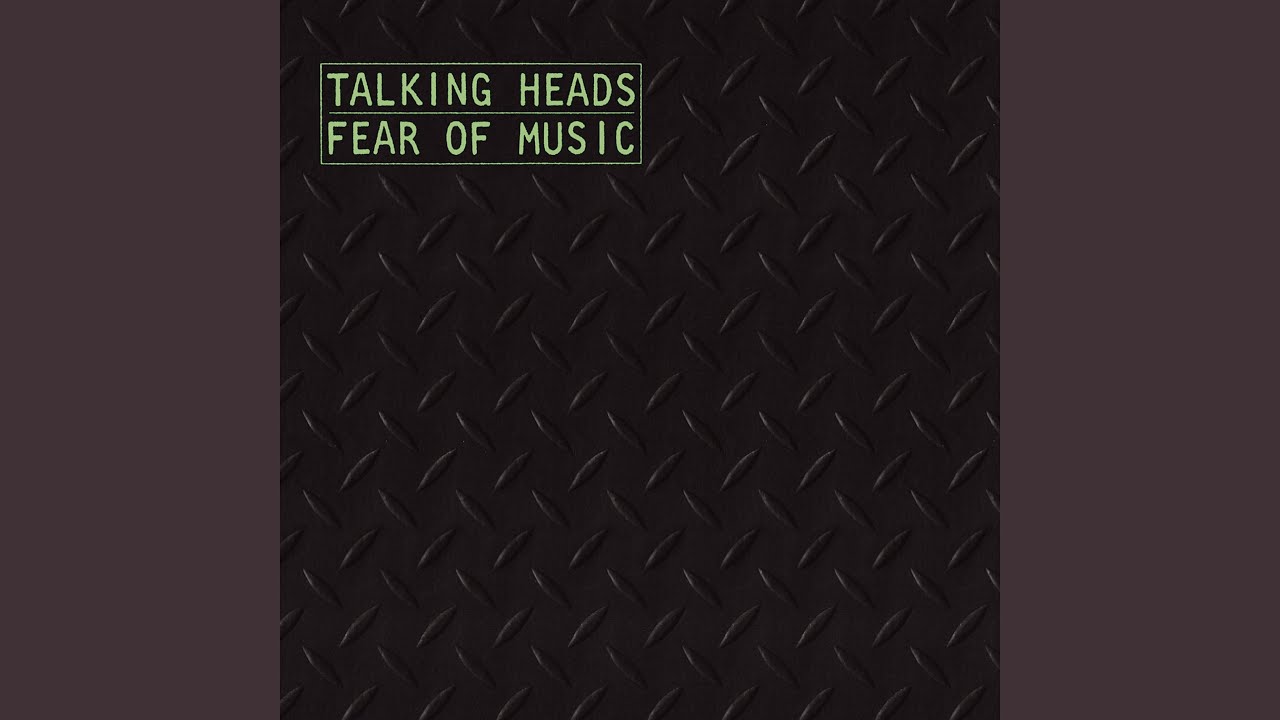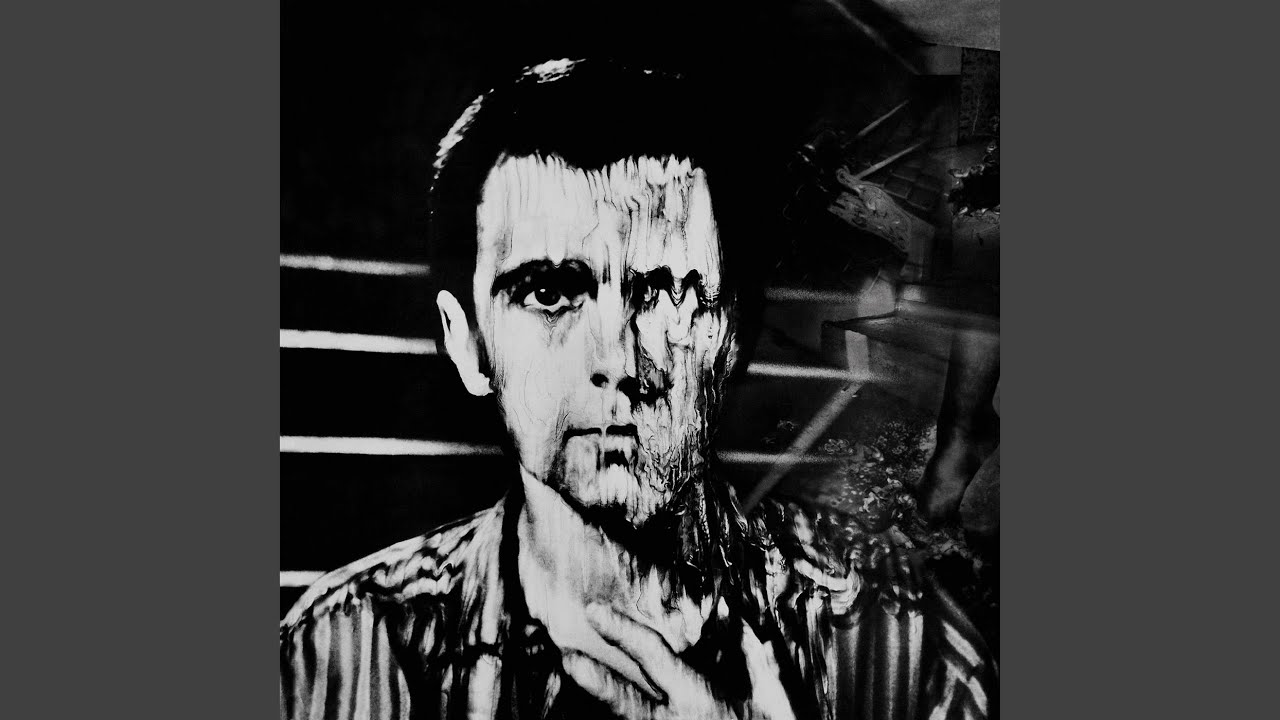When King Crimson released Discipline, their eighth studio album, on September 22 1981, reactions ranged across a pretty wide spectrum: joy from long-standing fans, who’d assumed they’d never get to hear a new record from Robert Fripp’s band ever again; bemusement from the great majority of people who thought that Crimson were dead and buried; and distaste, even anger, from hard line year zeroists appalled that one of the original progressive rock leviathans had returned to pollute the earth once again with more pseudo classical claptrap and tortuous concept albums.
Except that wasn’t actually the case at all – at least not the prog rock bit of it. In 1981, the genre was very much in retreat. Having lost frontman Jon Anderson and talismanic keyboardist Rick Wakeman, Yes had decided the game was up by the end of 1980. Emerson Lake & Palmer had already split up following 1978’s poorly-received Love Beach, and Pink Floyd had essentially turned into a grumpy solo vehicle for Roger Waters. Genesis were still going strong, but increasingly in the guise of an FM radio-friendly rock band.
Yet more to the point, Discipline didn’t sound anything like a progressive rock album, or certainly not as the genre had come to be understood by critics and public alike. The time signatures might still be a bit tricky, but this was an album dominated by a hypnotic twin-guitar attack influenced by systems music, gamelan, punk and funk. Most importantly, it sounded utterly modern, and completely removed from the baggy excesses of 70s-style prog. Instead, Fripp and his band joined the likes of David Bowie, Brian Eno, Peter Gabriel and David Byrne in creating a new type of experimental but accessible art rock inspired by both advances in music technology and an openness to non-Western musics.
King Crimson had originally disbanded at the end of 1974, having gone through numerous line-ups and styles of playing since their formation in 1968. While a guitarist of both remarkable technique and visionary power, Fripp found being a band leader more difficult, and had acquired a reputation for gnomic perfectionism which other members sometimes struggled to understand or meet. Nevertheless, King Crimson had produced some of the most jaw-droppingly exciting and intense music of the early ‘70s, always operating at a different level from the other progressive bands and driven by a fierce improvisational spirit.
However, by mid-’74, Fripp’s disillusionment with the music industry and a worsening spiritual crisis had caused him to withdraw to the point of passivity during the recording of the album Red, with bassist/singer John Wetton and drummer extraordinaire Bill Bruford forced to take over the reins in order to complete it (ironically, and perhaps not uncoincidentally, Red is regarded by many as King Crimson’s finest hour). After its posthumous release, Fripp retreated from music, immersing himself instead in the teachings of human potential advocate George Ivanovich Gurdjieff, via the work of J.G. Bennet, which would shape Fripp’s worldview going forward. (Fripp’s own account of his decision to split the band makes for eye-opening reading, with the guitarist predicting the collapse of civilisation by 1999.)
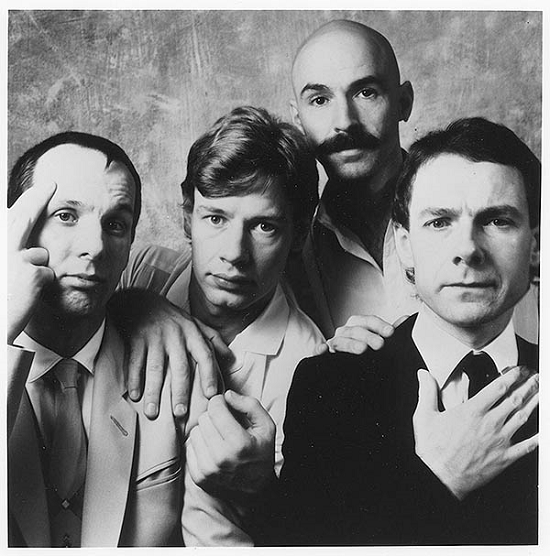
Photo by William Coupon
Fripp had originally intended to give up music altogether but was lured back to the studio in 1976 to play on Peter Gabriel’s first solo album. Like Fripp, Gabriel had also felt the need to disentangle himself from the record industry before making his next move, and was beginning the process of developing a new musical identity separate from his iconic role as Genesis’ frontman, evolving a sound that was both starker and more joyful, and a good deal less calculated than his previous band.
Fripp had clearly found a kindred spirit, playing guitar behind the stage curtain on Gabriel’s subsequent tour, and going on to produce the singer’s second album in 1978. But the collaboration that Fripp is still most renowned for is with David Bowie on his 1977 “Heroes” album.
As the story goes, co-producer Brian Eno – who had previously made two proto-ambient albums with Fripp – decided that the session needed some wildcard input from the guitarist. Fripp got on the first plane to Berlin and hotfooted it straight to Hansa studios. Plugging in, the first thing he recorded was the slippery, mechanistic vamps on ‘Beauty And The Beast’, and this was quickly followed by the waves of beatific sustain that heralded and underpinned the title track, one of the most recognisable pieces of playing in the modern rock canon.
Fripp was living in New York at the time, and operating by his own definition as “a small, independent, mobile, intelligent unit”. He immersed himself in the city’s vibrant musical scene, from hanging out at CBGB to attending Steve Reich performances. Soaking up the punk vibes of the Bowery and the experimental music of the art scene, not to mention the Latin, African and disco sounds that variously filled the streets, Fripp did his best to throw off the shackles of English repression and collaborate as widely as possible. Two of the most notable contributions he made were to Blondie’s Parallel Lines’ slow burner ‘Fade Away And Radiate’ and to Talking Heads’ ‘I Zimbra’ from Fear Of Music, the Afrobeat-derived track that their classic Remain In Light album would be built upon – once again, Fripp had been invited by Heads’ producer Brian Eno.
In 1979, Fripp released his first solo album, Exposure, an intriguing and diverse collection of quirky pop songs, spiky rockers, punk funk, soulful ballads and Frippertronics, ambient mood music created using a personalised version of the tape delay system that Eno had introduced him to. Again, it saw him working with a plethora of collaborators, including Eno and Gabriel, plus ex-Van Der Graaf Generator firebrand Peter Hammill (Fripp had played on some of the early VDGG albums), Daryl Hall (yes, of Hall & Oates) and Terre Roche (from The Roches, whose debut album Fripp produced). Also playing on the album was bassist Tony Levin, who Fripp had met via his work in Peter Gabriel’s band, and Phil Collins, who lest it be forgotten drummed on a lot of very interesting albums in the ‘70s.
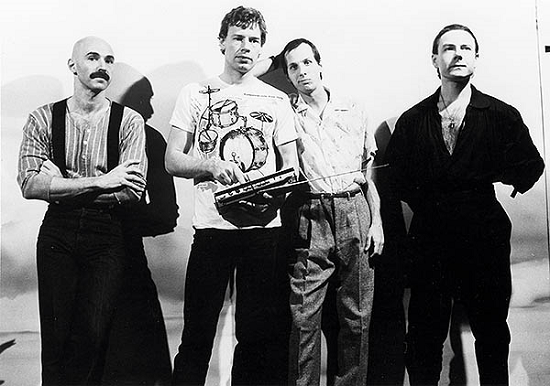
Photo by Philippe Hamon
The album was well-received, and Fripp followed it up a year later with the half-Frippertronics, half-‘discotronics’ release God Save the Queen/Under Heavy Manners. But by this point, Fripp had decided he wanted to be in a group again, and formed the instrumental ‘new wave dance band’ The League Of Gentlemen. Alongside Fripp, the group consisted of Barry Andrews, ex-XTC, on organ, and Sara Lee (bass) and Johnny ‘Toobad’ Elichaoff (drums) from the none more punk-sounding Baby And The Black Spots (Lee would later go on to play bass in Gang Of Four).
The League Of Gentlemen did 77 shows (in venues far smaller than Fripp had last played) and released just one self-titled album – featuring Danielle Dax of the Lemon Kittens on the track ‘Minor Man’ – but were a vital bridge towards what Fripp would do next, as well as producing some fantastic music in their own right. With Andrews chopping out garage punk chords, and Lee and Elichaoff pounding out primitive but effective 4/4 rhythms, Fripp would lay down the topline, which ranged from playful cyclical riffs to abrasive sheets of noise. It also saw the emergence of a chiming, fast-picking style that would become one of Fripp’s signature moves.
(The League Of Gentlemen deserve to be much better known and appreciated, but alas both their album and archival live release Thrang Thrang Gozinbulx remain frustratingly unavailable. However, you can hear and find out all about them here.)
It’s around about now that it becomes possible to play an art rock parlour game that we could call ‘The One or Two Degrees of Robert Fripp’, as the guitarist becomes a prime connector across a series of sonically and technologically innovative albums that would help define the tonal palette of avant rock to come, and soon be recognised as classics.
On 30 May 1980, Peter Gabriel released his third untitled album (though now usually referred to as Melt after its striking sleeve), which, despite the strange, unnerving nature of much of its musical content and lyrical themes of depression and madness, proved to be a major commercial and critical success. Fripp plays on three tracks, but his stylistic influence is all over the album, the guitars either stalking in the shadows or buzzing like early warning klaxons.
‘Games Without Frontiers’ and ‘Biko’ may be the album’s most enduring tracks, but it pushes out much further: the nervous breakdown on a 7” that is ‘No Self Control’ – egged on by Fripp’s needling guitar – made for interesting viewing on Top Of The Pops, while the deeply sinister ‘Intruder’ featured the first use of Phil Collins’s notorious gated drum sound, which would go on to dominate the pop-rock of the ‘80s. Plus, it’s also one of the first albums to use sounds from early digital sampler the Fairlight CMI. Also of note is Tony Levin’s use of the Chapman Stick on ‘I Don’t Remember’, a bodiless 12-string fretboard that enables the playing of seemingly impossible basslines.
On 12 September 1980, David Bowie released Scary Monsters (And Super Creeps), the album that all his subsequent output would be critically compared against (right up until the glorious capstone of Blackstar). Fripp is again an absolutely defining presence on this album, his playing imbuing it with an atmosphere of simmering violence. The way that his guitar rampages through the title track in particular is just astonishing, as is again the fact this song was released as a single, an act of sonic terrorism that saw it blaring from the nation’s radios and discotheques – and note the bizarre drum treatment, turning them into barking rottweilers. ‘Fashion’ is similarly startling, its modernist, minimal funk offset by Fripp’s constant chiselling away at it with the aural equivalent of a clawhammer.
Taking Heads then released Remain in Light on October 8, and here we encounter Fripp at one remove in the shape of Adrian Belew, an intuitively talented guitarist and singer, with similar interests in the power of abstract noise. Having first come to prominence in Frank Zappa’s band, he was then nabbed by Bowie for his 1978 Isolar II world tour (on the recommendation of Eno), with Belew encouraged to take on Fripp’s mantle and “Heroes” guitar parts (Fripp himself having turned down the opportunity to become part of Bowie’s live band). Belew would then occupy the same role on Bowie’s 1979 Lodger album as well.
In 1980, Belew fell into the orbit of both Talking Heads and Fripp. Having formed his own band GaGa, Belew supported The League Of Gentlemen at some of their New York gigs, one of which was attended by David Byrne and Jerry Harrison. When the Heads decided that Remain In Light required the input of an unorthodox guitar wrangler, Belew was the guy they flew out to Compass Point studios in Nassau, the album’s funky and frenetic backing tracks soon finding themselves under attack from his divebombing noise runs and string bending.
Remain In Light’s ‘world music’ (as it was patronisingly termed then) influenced rhythms and vocals were explored further by its producer Eno and David Byrne on their extraordinary, ground-breaking album My Life In The Bush Of Ghosts released 1 February 1981. It was a proto-sampledelic milestone that combined found sound radio broadcasts with singing and chanting from various ethnographic records, which Eno and Byrne then bolstered with a looser take on Remain In Light’s Afro-funk template. The stand-out track is the thumping, low-slung groove of ‘Regiment’, and yes, Fripp is in the thick of it, his guitar writhing and vibrating with ecstasy in response to the haunting, beseeching vocal of Lebanese mountain singer Dunya Yunis.
The kaleidoscopic Fourth World soundscape of My Life In The Bush Of Ghosts was instrumental in kickstarting the integration of non-Western musics into art rock, hip hop and techno, and eventually the mainstream (with Peter Gabriel’s WOMAD festivals and subsequent Real World record label also playing a key role).
Perhaps inevitably, Fripp wanted by now to explode the notion of him being merely art rock’s ultimate sideman. Having already begun what he referred to as “the drive to 1981” upon the release of Exposure, Fripp disbanded The League Of Gentlemen and set about forming a new group that would return him once again to the upper tier of the public arena and marketplace.
The first person that Fripp contacted was former Crimson drummer Bill Bruford. There had actually been preliminary discussions about a King Crimson reformation in 1977, but when Fripp had nixed the idea, Bruford and John Wetton had gone on to form the tech-prog supergroup UK with Eddie Jobson and Allan Holdsworth. However, with that having ground to a halt, and with bills to pay, Bruford was happy to get involved once again with Fripp. The pair began a protracted search for a suitable bassist, but upon hearing that Tony Levin had become free from his various session commitments, they immediately invited him to join, an offer the Stick virtuoso accepted.
To fully realise the music that Fripp wanted to explore in this new group, he soon realised he would need another guitarist in it. Fripp had previously discussed the possibility of working together with Adrian Belew, and now seemed the ideal opportunity to make this a reality. The only problem was that Belew was at the time part of Talking Heads’ hugely successful touring band. Nevertheless, Fripp pressed his case, and having made assurances that Belew would be able to continue working as a solo artist too, he got his man.
In March 1981, the band, going under the name of Discipline, began rehearsals in a small church hall near to Fripp’s hometown of Wimborne in Dorset. Within ten days, they had worked up the seven pieces that would feature on their debut album, and in May, played a relatively low-key tour to road test the material. Discipline were well-received by audiences consisting mainly of Fripp aficionados, but it quickly became apparent that if the band were to reach a wider fanbase, an obvious solution was at hand. Fripp himself felt that the type of music they were making was ‘Crimson music’, and so the half-pragmatic, half-philosophical decision was made for the new band to become the latest iteration of King Crimson.

Photo by William Coupon
They entered Island Studios with producer Rhett Davies, and in just three weeks, had a finished album in the can. In Sid Smith’s definitive book on the band, In The Court Of King Crimson, Davies notes they were very well-rehearsed, but had presented a challenge to record: “When they started playing I can remember thinking, ‘Who the fuck is playing what?’ The noise they made was just incredible… I had to keep soloing out the instruments: ‘OK, that’s the Stick doing that,’ and then, ‘Oh, Robert’s doing that line’ and so on.”
Over the previous few years, Fripp had been involved in making some of the most pioneering, cutting edge rock music of the period, but Discipline would up the ante even further, particularly in terms of what could be done within the supposed confines of a guitar-based format.
In addition, Fripp had for a long time striven to produce music that dissolved the boundaries between the players, so that the music almost played them. Alongside the twin inspirations of punk and funk, Fripp’s interest in the traditional systems music of Indonesia known as gamelan – where an ensemble of musicians plays simultaneous variations of the same melodic line on mainly percussive instruments – also came to the fore. Gamelan creates shimmering, metallic waves of sound, and its influence can be heard throughout the album, the instruments weaving, combining and then re-weaving seemingly at will, the players’ egos dissipated in the act of creation.
If this hi-def, poly-cultural vision of music still sounds beguilingly alien and futuristic forty years on, just imagine what it sounded like in 1981.
‘Elephant Talk’ begins with a mysterious oscillation suddenly brought into focus by the twitchy Martian bass groove of Levin’s Stick. It then bursts into a cyclical, minimal funk track: Fripp was still talking in terms of the band making dance music – maybe the original brain dance music – but you’d do yourself an injury if you actually tried to jive to this stuff. Belew shows off his armoury of effects, making his guitar mimic a swanny whistle and, yes, an elephant trumpeting, while Fripp takes a lazy solo, his sound both raw and serrated.
What’s immediately striking is Belew’s very American vocal delivery – it’s in your face and confrontational, though not without a certain quirky authority and even charm. In other words, he sounds a lot like David Byrne, though that’s not necessarily a bad thing. On ‘Elephant Talk’, he doesn’t bother to find a melody line, but instead speak-sings an alphabetical list of words relating to communication with growing exasperation – and halfway through breaks the fourth wall, snarling, “These are words with a ‘D’ this time!” It’s not the last time that the album will flirt with post-modern game-playing.
If ‘Elephant Talk’ acts as a palette cleansing introduction to the new King Crimson, ‘Frame By Frame’ is where Fripp’s gamelan ambitions really become apparent.
It starts with what sounds like the revving and ticking over of an incredible engine. There’s Fripp’s ludicrously fast note-picking, as though speed-weaving a metallic tapestry, while Belew stabs away over the top with shards, squeals and splinters of noise, and Bruford performs rapid fire rolls around his kit. And then the magic comes when the two guitars suddenly interlock – it’s like a dazzling, otherworldly mechanism slotting together, or a complex graph mapping the peaks and troughs of the guitarists’ thought processes, a particularly compelling image as the guitars gradually move out of synch. There’s also a proper, confident vocal from Belew on this song, which highlights his impressive facility for finding compelling melodies inside the warp and weft of this complex music.
After the advanced mathematics of ‘Frame By Frame’, ‘Matte Kudasai’ (Japanese for “please wait”) is an aural balm, a delicate, lilting blues, with the sliding sustain on Belew’s guitar like pedal steel. The singer gives full vent to the soulful side of his voice, the chorus line of “She sleeps in her chair / In her sad America” hanging disconsolately in the air. The word ‘soul’ isn’t necessarily one you’d associate with progressive rock, but Crimson in particular had always tended to favour gutsy, emotional singers over the more ethereal or intellectual approach of others, John Wetton being a prime example. ‘Matte Kudasai’ is a small but expressive song that’s unafraid of its own beauty.
In contrast, ‘Indiscipline’ is downright scary, the sound of a mind in turmoil being torn apart by obsession. It starts with series of jerky, hesitant notes, Bruford trying to goad the players into action with a barrage of paradiddles, before suddenly exploding into a grinding, predatory riff from Fripp and some painful fretboard torture from Belew. This sounds like the one track on the album that naturally follows on from the dense, avant-heaviousity of Red.
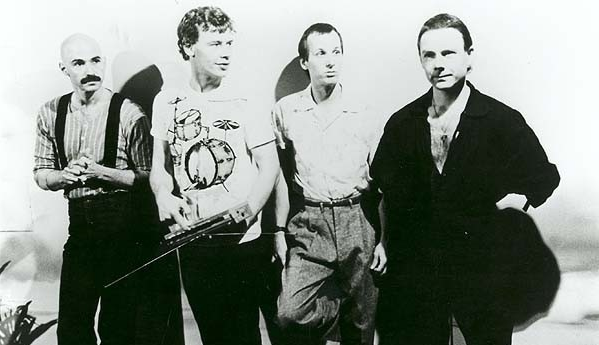
Photo by Philippe Hamon
The irony is that the words Belew speaks with the deranged bonhomie of a serial killer in between these furious brain-blasts come from an innocent letter his wife had sent him about a sculpture she had just completed. Belew’s delivery turns them into a sinister set of cues in a hair-trigger balancing act between sanity and oblivion: “I wish you were here to see it!”
Over a looping round of frantically funky guitars and a killer three-note bassline from Levin, ‘Thela Hun Ginjeet’ could be the war chant of some apocalyptic cult, particularly in the way that Belew belts it out. But it’s actually an anagram of ‘Heat In The Jungle’, a song that Belew had previously tried to write about violence on the streets of New York.
The track descends into a rattling cage of ringing six strings, under which Belew can be heard reciting a monologue which returns to the phrase, “This is a dangerous place”. The sound of the recording then changes, and we’re actually in the studio now, with Belew recounting a frightening encounter he had just had on the mean streets of Notting Hill, where a couple of Rastas had caught Belew taping his New York piece, and wondered what the hell this peculiar looking American was doing in their neighbourhood. So the song then becomes about the making of the song, courtesy of Fripp’s mischievous habit of secretly recording in-studio chatter and conversations.
The frenzied twists and turns of ‘Thela Hun Ginjeet’ are followed by the tentative, slow motion desert blues of ‘The Sheltering Sky’, named after the 1949 novel by beat writer associate Paul Bowles. Bruford plays a hypnotic, woody rhythm on an African slit drum as Fripp’s guitar turns into a snake charmer’s horn, sounding stranger and more exotic than ever. It could be meditative if it weren’t for the sense of growing unease that the various elements produce together. In fact, this track presages post-rock in the way that it constantly holds back from delivering an obvious pay-off, and builds a sublime sense of tension instead, its shimmering waves of air-bending heat leaving contrails in the twilight.
And then we come to the title track itself, another carefully wrought mechanism and the album’s final statement of intent, one which feels particularly indebted to Fripp’s ideal of a modernist gamelan music. Levin’s Stick lies flanged in the foundations, crushed by the dense weave of the twin guitar lines as they move through a series of head-spinning shifts, the parts connecting with a precision that bypasses standard comprehension and leaves the monkey mind gawping in wonder. It’s not hyperbole to talk about this track as guitar techno, though the human element is what makes it so special, particularly its chiming highlife-style crescendo, as already previewed on ‘I Zimbra’.
On its release, Discipline was reasonably well-received and taken seriously by the critics, though Fripp’s dreams of King Crimson being catapulted into the major league off its back proved to be somewhat ambitious, with the album peaking at a disappointing no. 41 in the UK charts and no. 45 in the US Billboard chart. Perhaps the name wasn’t quite the draw Fripp had assumed it to be, but crucially, unlike some of the other, far more successful albums he had guested on, there were no hit singles to drive sales or compelling frontmen to sell its vision.
Yet as an artistic achievement, it’s a triumph of technical virtuosity and humanist philosophy, the belief that music itself can act as a higher force in our lives. The other big art rock albums of the period that Fripp had played on may have pushed the envelope and pioneered new approaches to music making, but they were ultimately ego-driven, modernist staging for intellectual showmen. With this latest gathering of musicians under the banner of King Crimson, Fripp had tried once again to create ‘progressive’ music that bypassed traditional rock imperatives yet was exciting and transportive in its own right.
Discipline’s reputation may have grown over the years, but it remains a hugely under-appreciated album.
With grateful acknowledgement to Sid Smith’s In The Court Of King Crimson

